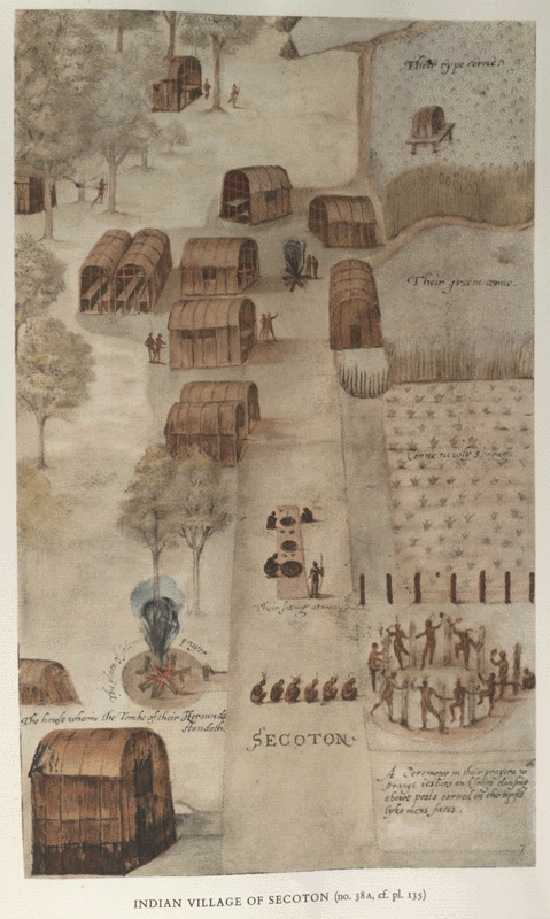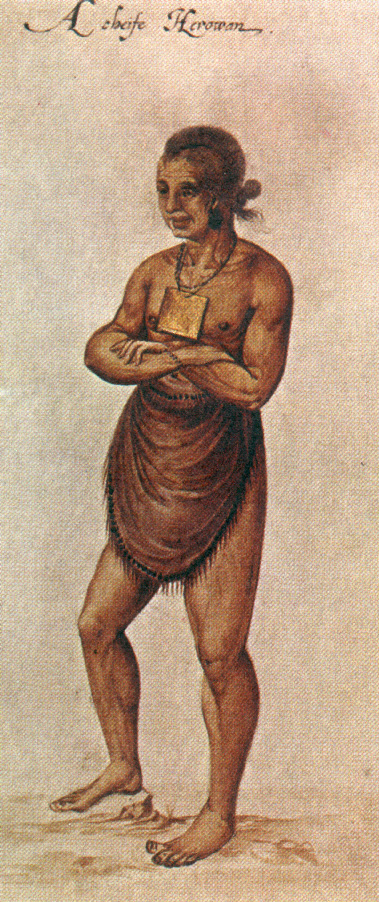
|
Indians of North America |

|
|
settings | descriptions | prejudice | equity
|
"THE SKETCH BOOK:TRAITS OF INDIAN CHARACTER," by Washington Irving.1819-20 |
| "THERE is something in the character and habits of the North American savage, taken in connection with the scenery over which he is accustomed to range, its vast lakes, boundless forests, majestic rivers, and trackless plains, that is, to my mind, wonderfully striking and sublime. He is formed for the wilderness, as the Arab
is for the desert. His nature is stern, simple and enduring; fitted to grapple with difficulties, and to support privations. There seems but little soil in his heart for the support of the kindly virtues; and yet, if we would but take the trouble to penetrate through that proud stoicism and habitual taciturnity, which lock up his character from casual observation, we should find him linked to his fellow-man of civilized life by more of those sympathies and affections than are usually ascribed to him.
It has been the lot of the unfortunate aborigines of America, in the early periods of colonization, to be doubly wronged by the white men. They have been dispossessed of their hereditary possessions by mercenary and frequently wanton warfare: and their characters have been traduced by bigoted and interested writers. The colonist often treated them like beasts of the forest; and the author has endeavored to justify him in his outrages. The former found it easier to exterminate than to civilize; the latter to vilify than to discriminate. The appellations of savage and pagan were deemed sufficient to sanction the hostilities of both; and thus the poor wanderers of the forest were persecuted and defamed, not because
they were guilty, but because they were ignorant.
The rights of the savage have seldom been properly appreciated or respected by the white man. |
| John White's drawing of a native Headman, 1580's. |
|
CORE
CLARIFY
"Environmental History is the study of how settlements alter ecological conditions and how those changes influence each era’s ideas about nature with respect to responsible resource use from one period to the next."
The initial impact of European settlement is the displacement, dispossession, destruction, and deliberate devaluation of the indigenous inhabitants of the Americas.
Donald Worster has written that "perception, ideology and values" are the basis for understanding all historical subjects but particularly comprehending environmental history that deals with the physical, biological and social transformation of places over time. "Ideas meaning those concepts associated with the perception, ideology and values that contribute to methods of discovery with respect to our surrounding land, air and water."
Place – topos-
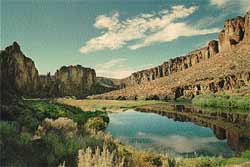
derives from bio-eco-geo- history
Natural history
Prehistoric
History
Favorite places
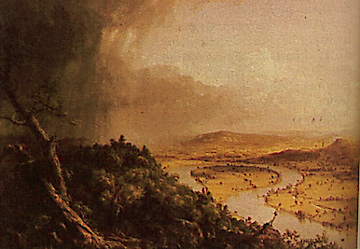
- Size (review pretest)
- Description
- Frame, border, boundary or “frontier" influences concepts
- Angle (view) (reveals, hides, opens, obscures ---foci)
- Content the features and elements comprising the scene
- Placement
- Foreground – important?
- Background – the setting (prelude and introduction)
- Vision
- History
- Pre columbian -- maize, beans, squash, tobacco, turkey & fish
- Early -- Indian wars (dispossession & occupation)
- Middle -- Revolution, Slavery and civil war
- Late -- Conservation and preservation
- Now – suburban/urban/industrial
- cityscape &
- Gospel of Ecology
Native American conditions and the origins of
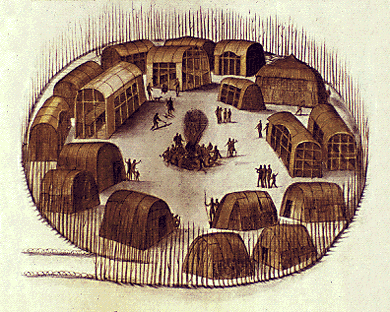
- agriculture
- hunting
- irrigation and agriculture
- numbers and calendar from the Mayans
Readings
I. Reisner, A Savage Encounter, violence through regeneration and revolt
Illusions prevailed over geographical reality (climate + geology + bio)
Louisiana Purchase and the visionary character of John Wesley Powell
II. Merchant, The Indians in the landscape
14,000 years ago, some would argue 20,000 to 30,000 years ago, indigenous peoples came to the Americas from Siberia or other regions of Asia.
1500s the stone and adobe pueblos (city in Spanish)
horses were released in the revolt of Popé in the New Mexico Pueblos, 1676
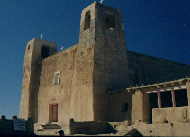 Acoma, City of the Sky, place of indigenous resistence to Iberianization, New Mexico.
Acoma, City of the Sky, place of indigenous resistence to Iberianization, New Mexico.
The story emerges from artifacts that remain from the past.
"The same prejudices, which were indulged thus early, exist in common circulation at the present day. Certain learned societies have, it is true, with laudable diligence, endeavored to investigate and record the real characters and manners of the Indian tribes; the American government, too, has wisely and humanely exerted itself to inculcate a friendly and forbearing spirit towards them, and to protect them from fraud and injustice.*" Washington Irving, 1820.
| Who are the Indians? |
Yaqi, Anasazi-Pueblo, Micmac, Shawnee, Leni-Lenape, Pequot, Powhatan, Ais. |
|
Initial inhabitants - aboriginal, original, indigenous peoples
"First Nations" is the term used to refer to Indians by Canada.
For US reaty obligations & as such legally they are “internal dependent nations,” was the term used to describe Indian land. |
| |
Shown in John White's paintings from the late 1500s of Virginia and the Carolinas indigenous peoples native to The Americas developed farming domesticating one half of the food crops by weight that are consumed around teh world today including but not limited to potatoes, corn, beans, squash, chiles, and tobacco. |
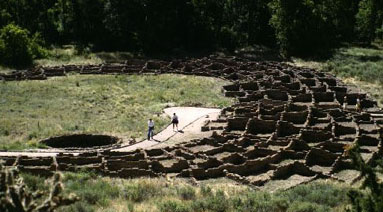 |
Recent photo of Bandelier National Monument an Anasazi ruins. |
| "Indian Village of Secotan," by John White, 1580s in the eastern woodlands. |
Dates:
1539 Coronado’s expedition to the southwest
1676 Pueblo revolt
1776 Mission San Diego founded in California
1848 Treaty ending the Mexican War
1869 first Powell expedition down the Colorado RIver
1888 Powell’s irrigation survey |
| 1900 -- Theodore Roosevelt became President due to an assassination. |
| 1902 -- The Newland’s Act institutionalizes "reclamation" of arid lands |
Chaco Canyon discussed
National Park Service, Chaco National Historical Park
The story emerges
How different was their state while yet the undisputed lords of the soil! Their wants were few, and the means of gratification within their reach. They saw every one around them sharing the same lot, enduring the same hardships, feeding on the same aliments, arrayed in the same rude garments. No roof then rose, but was open to the homeless stranger; no smoke curled among the trees, but he was welcome to sit down by its fire, and join the hunter in his repast. 'For,' says an old historian of New England, 'their life is so void of care, and they are so loving also, that they make use of those things they enjoy as common goods, and are therein so compassionate, that rather than one should starve through want, they would starve all; thus they pass their time merrily, not regarding our pomp, but are better content with their own, which some men esteem so meanly of.' Such were the Indians, whilst in the pride and energy of their primitive natures: they resembled those wild plants, which thrive best in the shades of the forest, but shrink from the hand of cultivation, and perish beneath the influence of the sun." Washington Irving, 1820
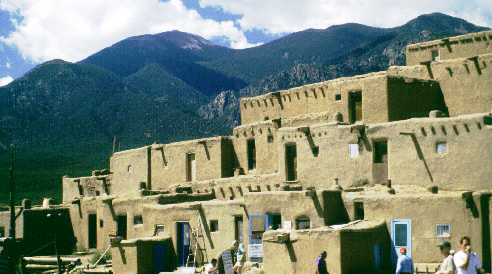
Taos pueblo is an Indian owned indigenous settlement in the Great Basin.
WHATEVER PLACE IS YOUR FAVORITE, THEREIN RESIDES A GEOLOGICAL AND HUMAN PAST; occupiers of the land, before we came there, have shaped its look, its picturesque qualities, its biology and its current configuration of elements.
Reisner
pp. 16 “and the other savage”
Spanish colonial land grant system or the "encomienda" included: riparian springs, extensive grazing, & irrigable farmland. This was to assure a size of land grant sufficient to sustain settlers in the western, arid regions of the Great Basin and range region..
Merchant
pp. 27 “a European introduction—the horse”
R. Illusions are very toxic to the imagination but corrupt our idea of the biogeography.
M. European livestock and foodstuffs altered the native ecology.
Washington Irving wrote long before the sweeping epidemics, horses, and the fur trade would so alter the balance of power among indigenous peoples on the eastern seaboard that there would be repurcussive migrations of peoples from ancstral lands all the way to the great plains and Rocky Mountains. Irving insisted that:
"An instance of one of those sudden exasperations, arising from a motive peculiar to the Indian character, is extant in an old record of the early settlement of Massachusetts. The planters of Plymouth had defaced the monuments of the dead at Passonagessit, and had plundered the grave of the Sachem's mother of some skins with which it had been decorated. The Indians are remarkable for the reverence which they entertain for the sepulchres of their kindred. Tribes that have passed generations exiled from the abodes of their ancestors, when by chance they have been travelling in the vicinity, have been known to turn aside from the highway, and guided by wonderfully accurate tradition, have crossed the country for miles to some tumulus, buried perhaps in woods, where the bones of their tribe were anciently deposited; and there have passed hours in silent meditation. Influenced by this sublime and holy feeling, the Sachem, whose mother's tomb had been violated, gathered his men together, and addressed them in the following beautifully simple and pathetic harangue; a curious specimen of Indian eloquence, and an affecting instance of filial piety in a savage.
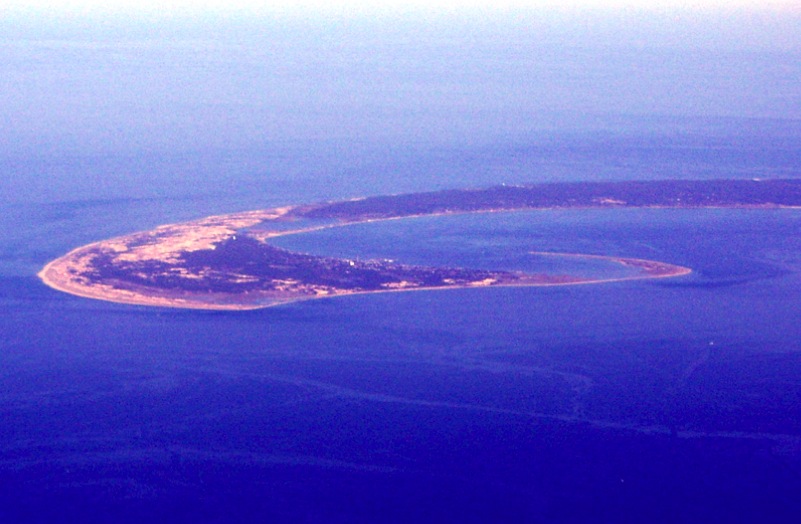 Provincetown, Cape Cod.
Provincetown, Cape Cod.
"When last the glorious light of all the sky was underneath this globe, and birds grew silent, I began to settle, as my custom is, to take repose. Before mine eyes were fast closed, methought I saw a vision, at which my spirit was much troubled; and trembling at that doleful sight, a spirit cried aloud, 'Behold, my son, whom I have cherished, see the breasts that gave thee suck, the hands that lapped thee warm, and fed thee oft. Canst thou forget to take revenge of those wild people who have defaced my monument in a despiteful manner, disdaining our antiquities and honorable customs?
See, now, the Sachem's grave lies like the common people, defaced by an ignoble race. Thy mother doth complain, and implores thy aid against this thievish people, who have newly intruded on our land. If this be suffered, I shall not rest quiet in my everlasting habitation.' This said, the spirit vanished, and I, all in a sweat, not able scarce to speak, began to get some strength, and recollect my spirits that were fled, and determined to demand your counsel and assistance."
I have adduced this anecdote at some length, as it tends to show how these sudden acts of hostility, which have been attributed to caprice and perfidy, may often arise from deep and generous motives, which our inattention to Indian character and customs prevents our properly appreciating."
Washington Irving, 1820.
Places are more than special or memorable sites, they are biogeographical settings where organic and inorganic elements and features conspire to sustain life and where the past informs or explains the present.
Virtually an island called California together with the distant valleys of the Willamette River, Columbia River watershed, and Puget Sound were isolated from Eastern Anglo-American settlements until 1805–1830s with fur trade. Then came war in 1846 & occupation of the land south of Vancouver Island and north of Baja California, Mexico.







